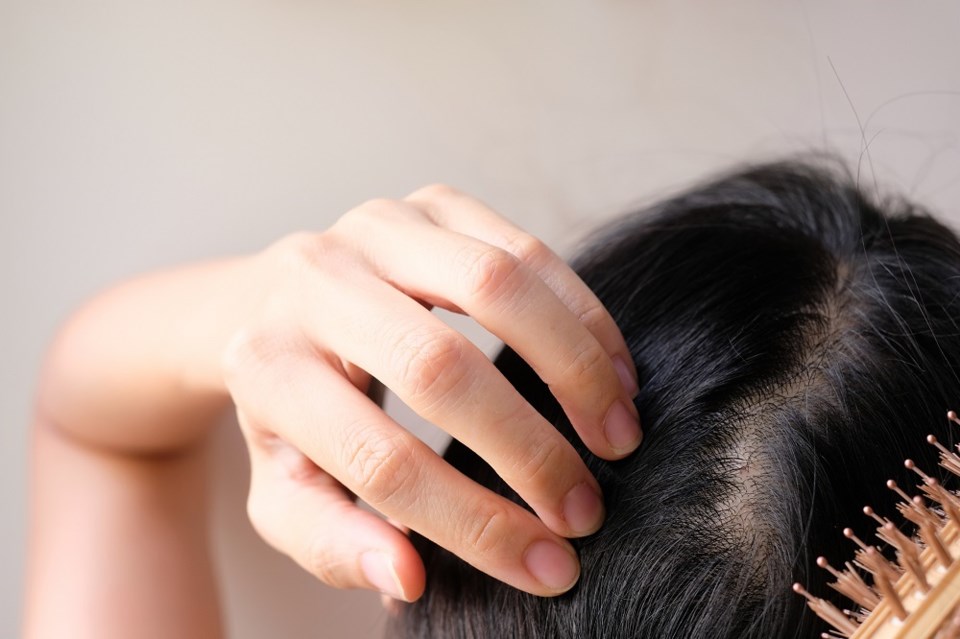The following was submitted to Glacier Media from Kareen Van Nen of Integrated Ink Scalp Micro Pigmentation in Port Moody, B.C.
As September ushers in Alopecia Awareness Month, it's an opportunity to highlight the struggles and advancements related to this often-misunderstood condition.
The 2022 Oscars incident, where Will Smith slapped Chris Rock in response to a joke about his wife’s alopecia, unexpectedly brought this condition into the spotlight.
Alopecia, a term encompassing various types of hair loss, affects millions worldwide and remains a challenging issue for many.
Understanding Alopecia
Alopecia is characterized by any form of hair loss from the scalp or other parts of the body. The most common types include:
- Alopecia Areata
- Causes sudden, patchy hair loss that can affect any area of the body.
- Alopecia Totalis
- Results in the complete loss of hair on the scalp.
- Alopecia Universalis
- Leads to the loss of all body hair, including eyebrows and eyelashes.
- Androgenic Alopecia
- Also known as male or female pattern baldness, this common form of hair loss is genetically predisposed and influenced by hormonal factors.
Not just about hair loss
Alopecia profoundly impacts individuals of all ages, influencing various aspects of their lives, including school, work, family dynamics, relationships, and finances.
For example, a small, Loonie-sized bald spot might initially seem minor but can rapidly expand, leading to more patches and increased scalp exposure. Despite numerous visits to dermatologists and painful injections, traditional treatments may fail to provide relief.
The search for a solution might lead individuals to try social media remedies, such as dubious scalp topicals, hair growth vitamins, or internet-suggested dietary changes, often with little success.
These desperate measures highlight the emotional and financial challenges of managing alopecia, especially given that no cure currently exists for any type of the condition.
The emotional toll can be profound, not only for the affected individual but also for their family.
What starts as a few missing strands of hair can eventually affect eyebrows, eyelashes, and even body hair, leaving everyone involved feeling helpless, depressed, and overwhelmed by the constant worry and impact on daily life.
Emerging treatments and support
Despite the challenges, hope is on the horizon with the introduction of JAK inhibitors in 2022. This promising new class of medications targets the immune system’s abnormal response and shows potential in treating alopecia.
However, these medications come with a hefty price tag, typically ranging from $20,000 to $30,000 annually, and are generally prescribed only to individuals with 55 per cent or more hair loss.
The high cost places them out of reach for many families and underscores the need for broader medical service coverage.
Financial and emotional toll
The cost of alopecia-specific treatments can be exorbitant, burdening individuals with both financial and emotional strain.
Alopecia should be recognized as more than a cosmetic issue; it is a significant mental health concern that can lead to depression and anxiety. This condition can be particularly devastating for young individuals under 25, making access to effective treatments like JAK inhibitors crucial.
Unfortunately, these treatments are often not covered by insurance, placing them out of reach for many families.
Who can help?
In addition to dermatologists, a range of alternative and scientifically backed treatments is available for managing alopecia.
Trichology, the study and treatment of hair and scalp disorders, offers specialized diagnostic and therapeutic approaches to address both the underlying causes of hair loss and potential solutions for promoting hair regrowth and scalp health.
Platelet-rich plasma (PRP) therapy involves injecting concentrated platelets from the patient’s own blood into the scalp to stimulate hair growth and improve density. Additionally, permanent makeup (PMU) and Scalp Micropigmentation (SMP) can enhance the appearance of hair loss.
These professionals are making significant strides in offering support and guidance for those affected by hair loss, bridging the gap between medical treatments and emotional support. They provide hope, refuge, and practical solutions and can refer clients to world-class alopecia specialists committed to finding solutions for all types of hair loss.
Many treatment clinics also offer free consultations.
A call to action
Alopecia Awareness Month provides a vital opportunity to raise awareness and support for those affected by this condition.
By learning about alopecia, recognizing the advancements in treatment, and advocating for better medical intervention coverage and support, we can help alleviate the difficulties faced by individuals.



